Hailing from the Indonesian island of Java (and other SE Asian countries), Taxiphyllum barbieri is a versatile moss, to say the least.
It’ll thrive as an aquatic moss but will also readily grow on land in a humid, closed terrarium environment. In fact, this vibrant green tropical moss will happily grow just about anywhere as long as it has enough water!
In a terrarium, it works best attached to rocks and wood for a jaw-dropping 3D scene.
Taxiphyllum barbieri is often mistaken for a variety of mosses, not least because it was incorrectly classified as Vesicularia dubyana for a long while. But, thankfully, it has absolutely earned its place as a well-loved terrarium and aquascaping mainstay.

Where to Buy Java Moss
See the links below to purchase from reputable terrarium plant shops and marketplaces (may include affiliate links).
Java Moss Care & Growth
| Plant Type | Moss |
| Lighting | Medium – high indirect light |
| Temperature | 70-90°F (21-32°C) |
| Watering | Constantly moist |
| Humidity | High humidity (80-100%) |
| Growth | 1-5 inches (usually less on land) |
Lighting
Lighting-wise, Java Moss is about as flexible as you could possibly want. While it can thrive in brighter lighting, it’s perfectly happy in a low-light environment, making it a great fit for terrariums.
That being said, it tends to grow faster in brighter environments, so a grow light may help speed up its growth somewhat if that’s what you’re going for!
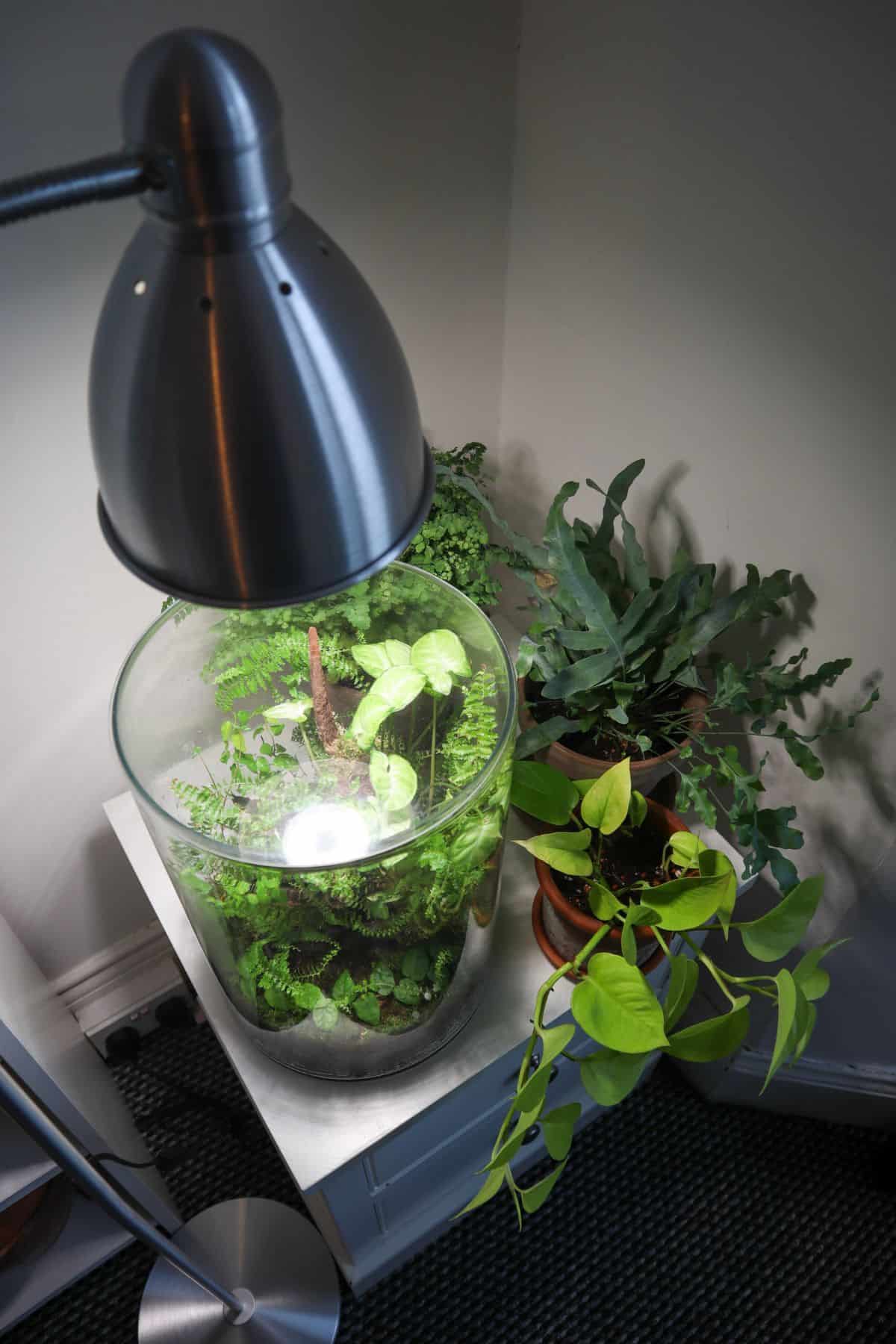
Watering
Being a primarily aquatic moss, Taxiphyllum barbieri needs constant moisture, and it will quickly dry out in an arid environment. It needs to be kept wet and the humidity high (or ideally both).
So, unlike most terrarium mosses, it can be a little high maintenance in the watering department. It’ll do best with regular, direct spraying to keep it moist.
Substrate / Soil
Just about any solid surface will do for Taxiphyllum barbieri, so we’re spoilt for choice. It will work attached directly on top of substrate as a carpeting moss, but it doesn’t tend to look very neat (there are mosses much better suited to the job, such as Cushion Moss).
Where Java Moss really stands out, however, is epiphytically attached to rocks or wood. Because it tends to grow better on surfaces that can hold some moisture, we recommend applying a little Sphagnum moss (live or preserved) to your hardscape to create a moisture reservoir and then attaching your Java Moss on top of that.
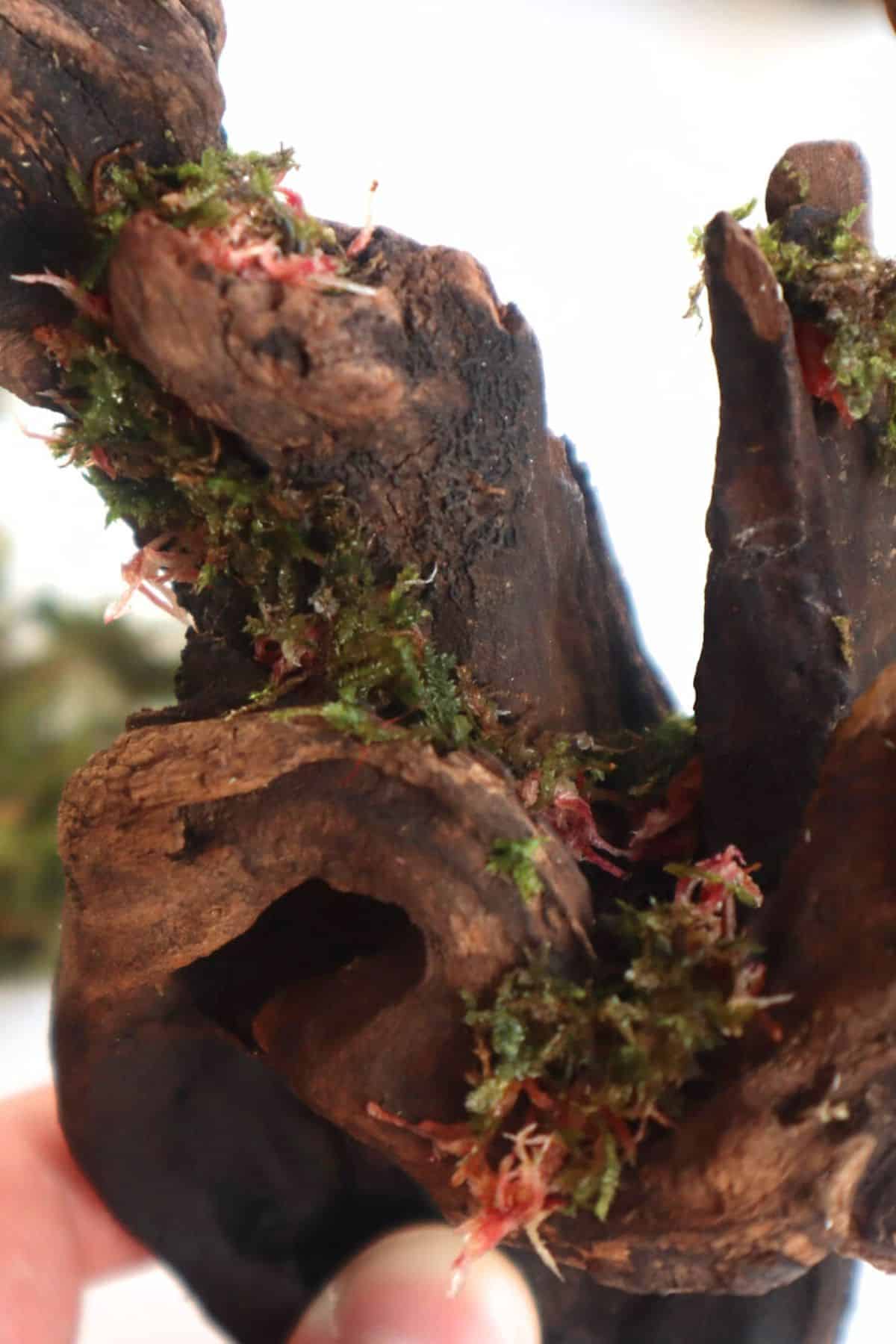
Temperature & Humidity
Java Moss needs a very high humidity in order to thrive in a non-aquatic setting. It has no roots, after all, so it needs to get all of its water from the air.
It’ll need a humidity level somewhere up in the 90% range. So (unless you live in a jungle), you’ll definitely need a closed terrarium container to achieve this.
Growth
When submerged, Java Moss grows long and wild. Growth is a little more restrained above water, but it’s still messy (hence why we recommend it as an epiphytic moss and not a carpeting moss).
When properly established on wood or rock, Java Moss will spread across the hardscape to create lush wild growth – a look that’s very challenging to achieve without an aquatic moss. Though patience is key here, Taxiphyllum barbieri grows relatively slowly, even under ideal conditions. This also means it won’t need a lot of trimming in a terrarium.
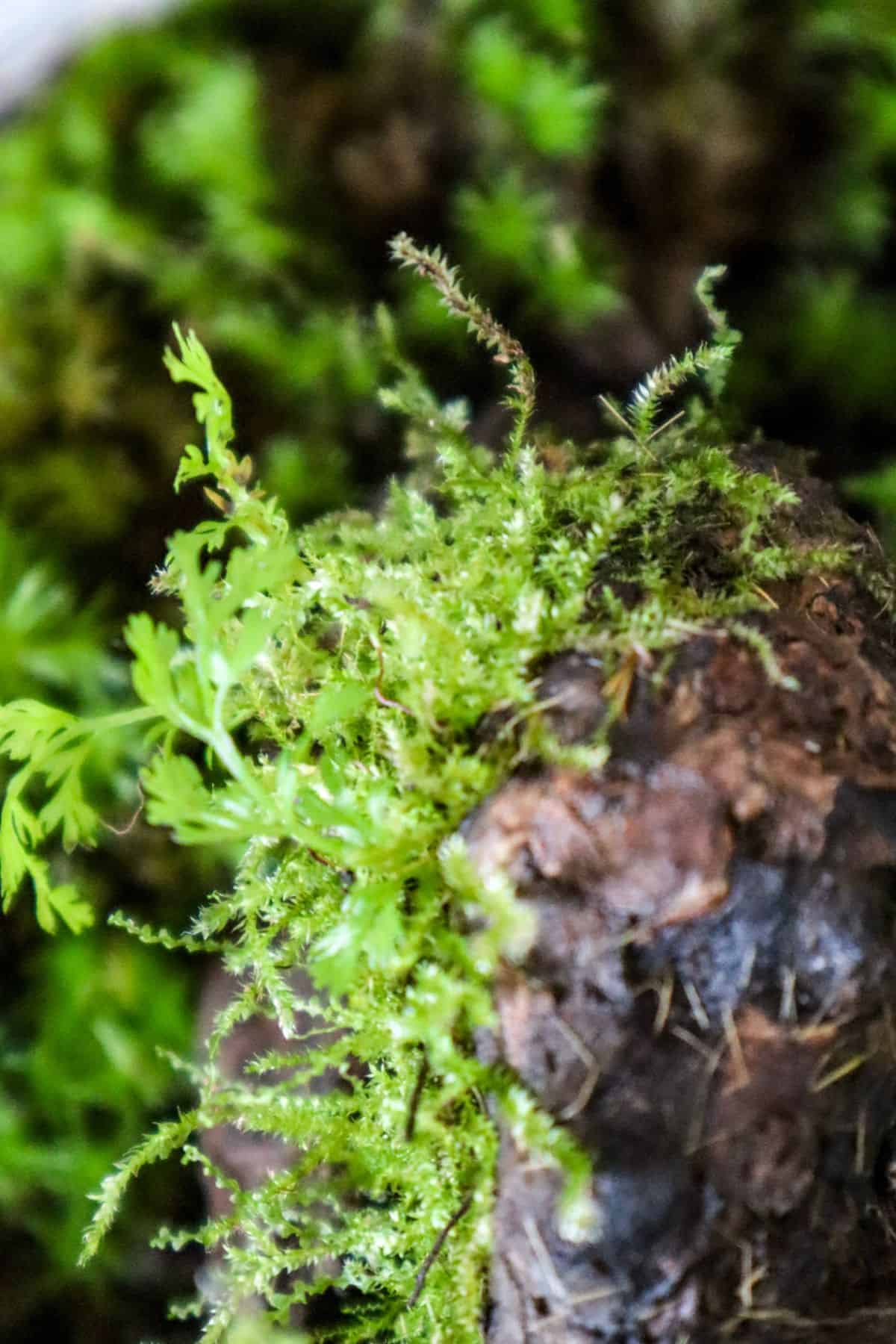
Propagation
Taxiphyllum barbieri propagates readily through simple division, so you can easily split it into chunks to place around a terrarium.
Or if you’re applying to rock or wood, you can chop it into a fine paste using scissors or rip it up a little, then apply that to a surface (ideally on top of your Sphagnum Moss). Works a treat!
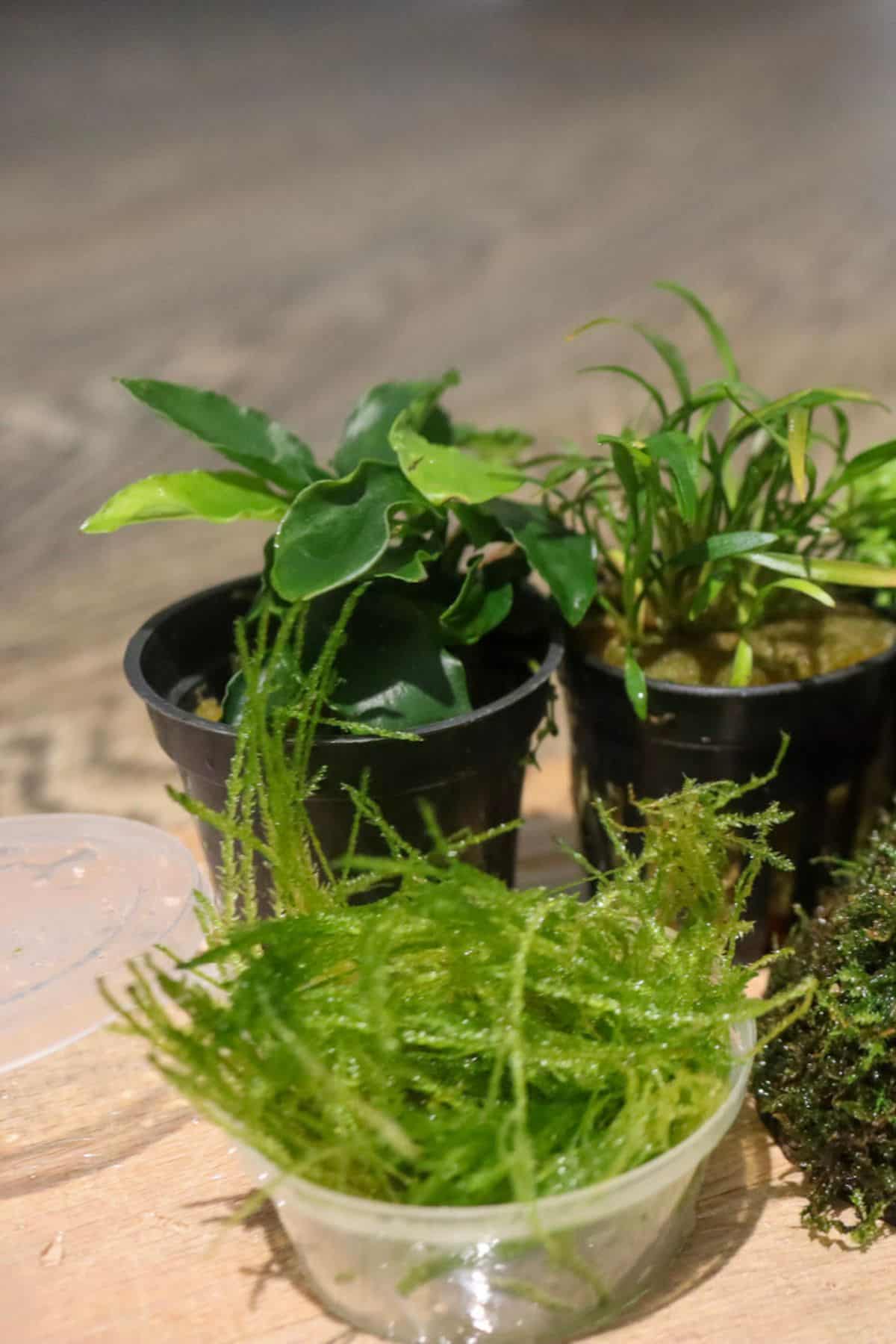
Varieties & Similar Plants
Other notable varieties of the Taxiphyllum group are both fully aquatic mosses: Taxiphyllum ‘Spiky’ (a larger moss with long grass-like stems) and Taxiphyllum ‘Flame,’ which looks like a deep green campfire.
Also, Java moss was previously thought to be a part of the Vesicularia genus along with Christmas Moss, so the two are often mistaken.
Common Problems
Taxiphyllum barbieri is a pretty hardy moss; the only real issue you might run into is keeping the humidity high enough to keep it moist.
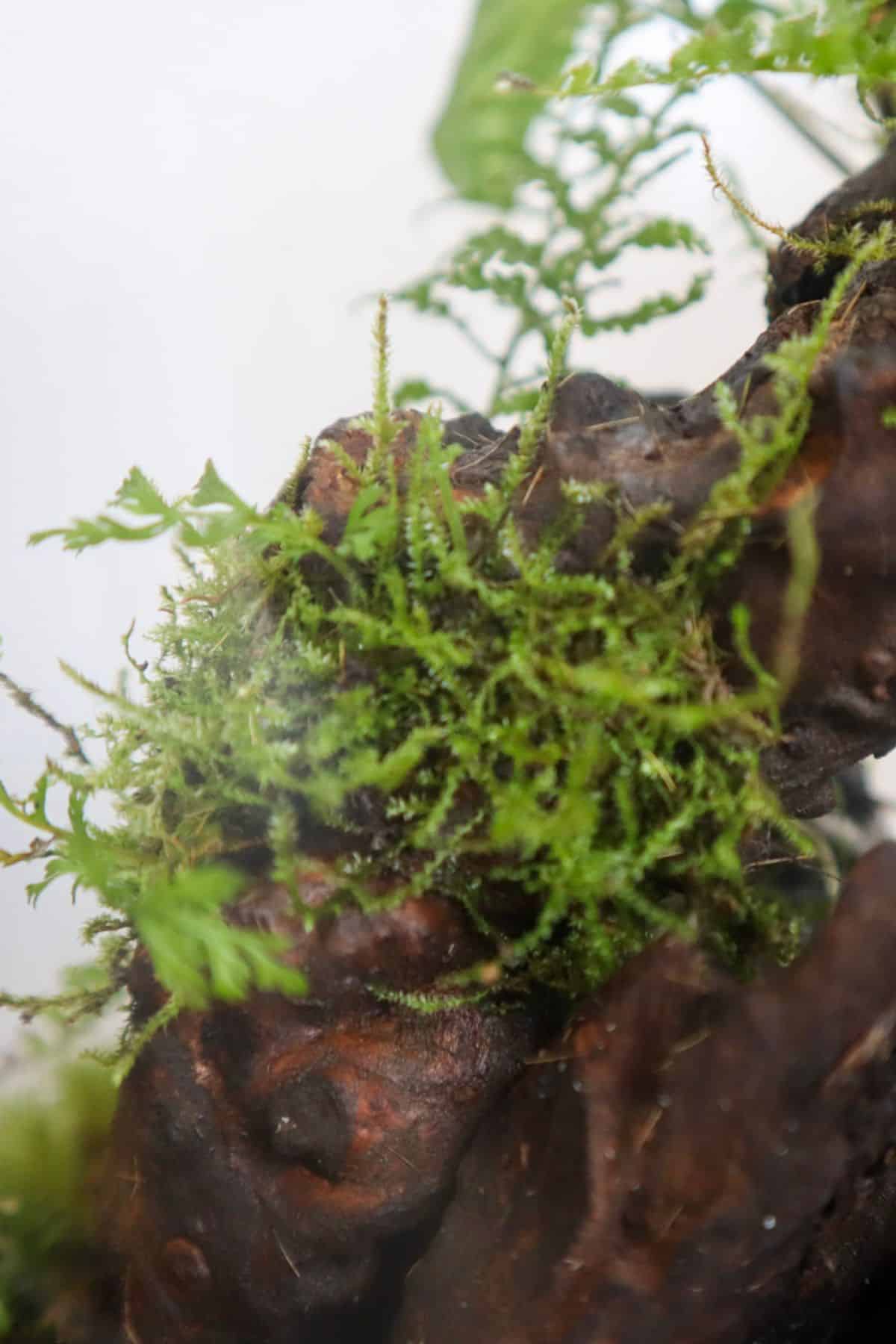
You can get around this problem by applying your Java Moss on top of Sphagnum Moss (and by doing so, giving your Taxiphyllum barbieri access to a constant moisture supply). Spraying the moss regularly will help resolve this issue, too!
